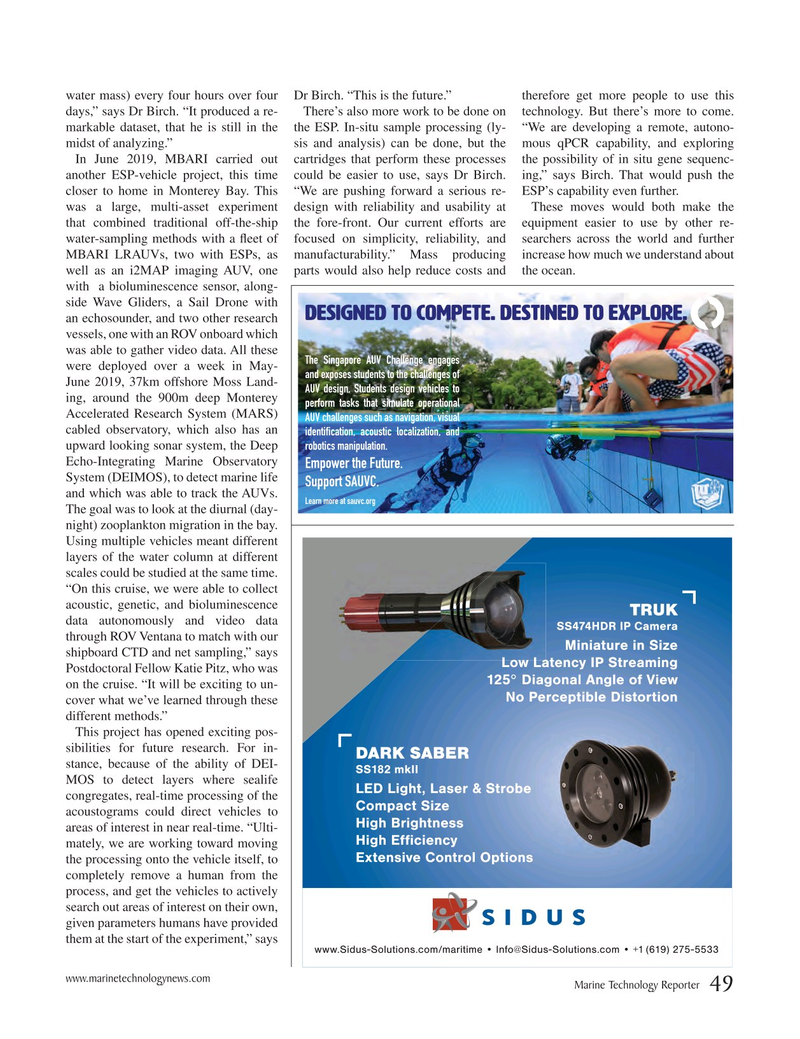
Page 49: of Marine Technology Magazine (March 2020)
Read this page in Pdf, Flash or Html5 edition of March 2020 Marine Technology Magazine
water mass) every four hours over four Dr Birch. “This is the future.” therefore get more people to use this days,” says Dr Birch. “It produced a re- There’s also more work to be done on technology. But there’s more to come. markable dataset, that he is still in the the ESP. In-situ sample processing (ly- “We are developing a remote, autono- midst of analyzing.” sis and analysis) can be done, but the mous qPCR capability, and exploring
In June 2019, MBARI carried out cartridges that perform these processes the possibility of in situ gene sequenc- another ESP-vehicle project, this time could be easier to use, says Dr Birch. ing,” says Birch. That would push the closer to home in Monterey Bay. This “We are pushing forward a serious re- ESP’s capability even further. was a large, multi-asset experiment design with reliability and usability at These moves would both make the that combined traditional off-the-ship the fore-front. Our current efforts are equipment easier to use by other re- water-sampling methods with a

 48
48

 50
50
